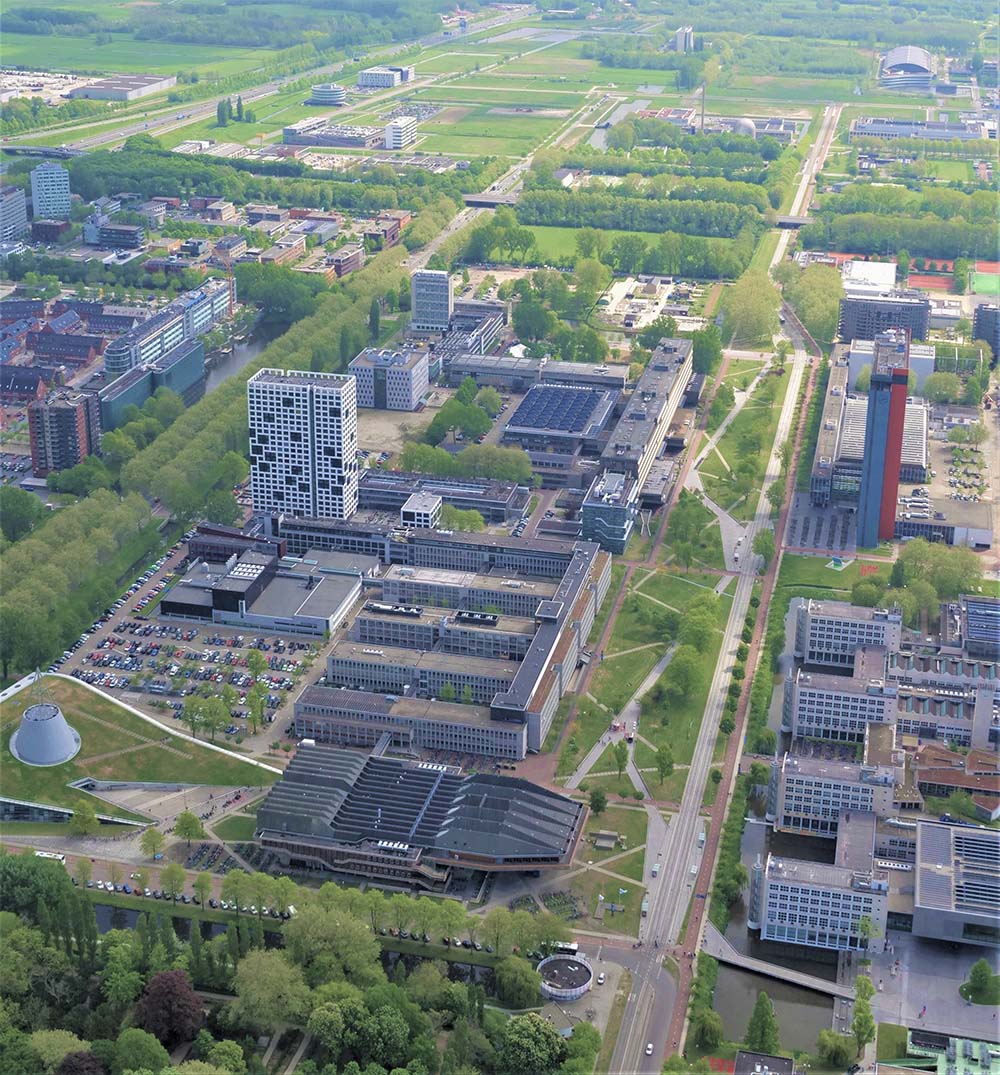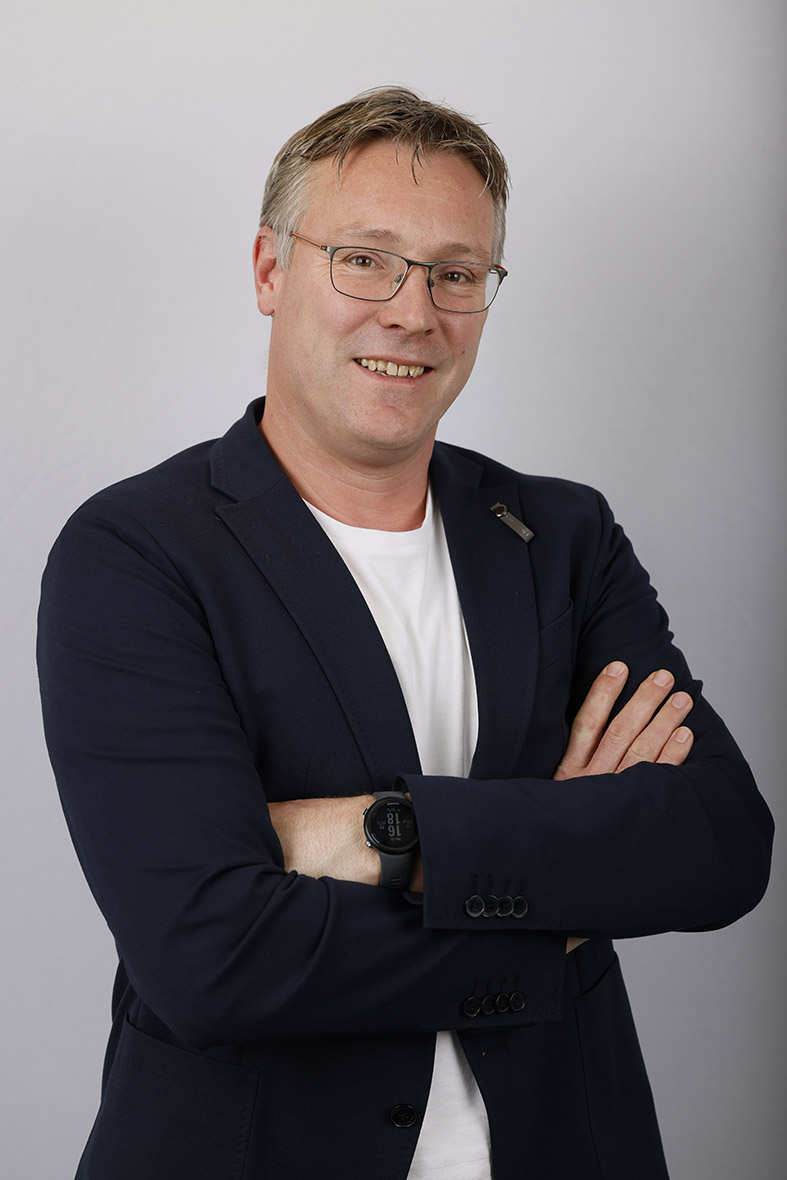Providing reliable, affordable and sustainable energy for all campus buildings
Sander Snelleman - Head of Energy department
At Campus Real Estate & Facility Management at TU Delft, Sander Snelleman is responsible for the energy systems on the campus. His aim is to provide reliable, affordable and sustainable energy for all buildings on campus. ‘If we want to succeed in the energy transition, it’s important not to rule any solutions out.’ So what is his strategy for the coming years?
Heating: away from natural gas towards geothermal heating and thermal energy systems
Currently, buildings on campus are mainly heated by gas. But we can reduce the amount of gas we consume to heat our buildings by focusing on sustainable energy sources. This will also reduce TU Delft’s carbon emissions. For example, there are plans for a geothermal heat source that could reduce gas consumption by at least 50%. The aim is to make maximum use of geothermal energy through optimisations. For example, the option of high temperature storage is being looked at so that in wintertime we can use residual geothermal heat left over from the summer. In the long run, we might only need to use gas in extreme weather conditions.
New buildings are being developed with unprecedented levels of insulation, meaning they will need less heating than ever before. Those buildings are equipped with thermal energy storage. The advantage of this system is that in addition to providing sustainable heating, it can also provide cooling.
Whenever buildings are due for large-scale renovation work, we will take a critical look at the best solution for heating. Since existing buildings increasingly need cooling too, the transition to thermal energy storage would be an obvious choice. The options being explored for sustainable cooling on campus include aqua-thermal heating.
Once every building on campus has been renovated or modernized and they are all insulated to a high standard, no more high-temperature heat will be required, only low-temperature heat. That means that geothermal energy will be a good solution for the energy transition, helping to reduce our consumption of gas. This will create more opportunities for alternative fuels such as hydrogen.
Electricity: demand is increasing, but so are the options for generating it sustainably
TU Delft is predicted to see an increase in its electricity consumption in the years to come. This is due to increasing demand for cooling, electrical charging and research facilities. The heat and cold storage systems and other air-conditioning systems will also require electricity.
TU Delft currently purchases sustainable electricity from Luchterduinen offshore wind farm, located 23 kilometres out to sea near Noordwijk and Zandvoort. More and more sustainable electricity is generated on campus too, but the growing demand for electricity on campus means that more generating capacity is required. The university could generate its own electricity in various ways. Firstly, it could expand the capacity of its solar panels. Roofs on campus often already have solar panels fitted, so the focus is on exterior walls and other smart solutions. Secondly, the options for generating wind energy on campus are also being looked into, together with scientists from the university. Wind turbines cause vibrations that could disrupt scientific research, so the challenge is to enable wind energy without disrupting research on campus. Collaboration between Campus Real Estate & Facility Management and university scientists will be crucial in this regard. In order to carry out a scan of the solar potential of the campus, there has been a successful partnership with scientists from TU Delft, as in several other projects.
An independent and campus-wide energy network: affordable and reliable
In addition to aiming for sustainable heat and electricity and thereby reducing carbon emissions – TU Delft is aiming to become a carbon-neutral campus by 2030 – energy reliability and affordability are also priorities for TU Delft. The turbulence of the energy market and increasing pressures on the energy network mean that it is important to develop an energy system that is as self-contained as possible and that it is campus-wide. That will maximize the availability, reliability and affordability of energy.
If the campus had its own energy network, an energy-supplying building – such as Echo – could automatically supply energy to other users on the campus network without any involvement from third parties. The options for storing electricity in the network are currently being examined too, in order to absorb peaks in power production and respond to potentially variable energy prices on the market. The grid capacity would be expanded in the southern part of the campus to include the new developments taking place there, and energy could be exchanged between buildings there, too. A smart grid is a prerequisite for the ongoing development of the network and to enable energy exchange.
Finally: never rule anything out
When it comes to the energy transition, it is important not to rule any solutions out. After all, we are seeing one development and innovation after another in the field of energy. A solution that might seem unviable or too costly today could become a promising new avenue tomorrow. Furthermore, it is crucial to continue to take steps in the energy transition and keep working for societal impact and a better society.


